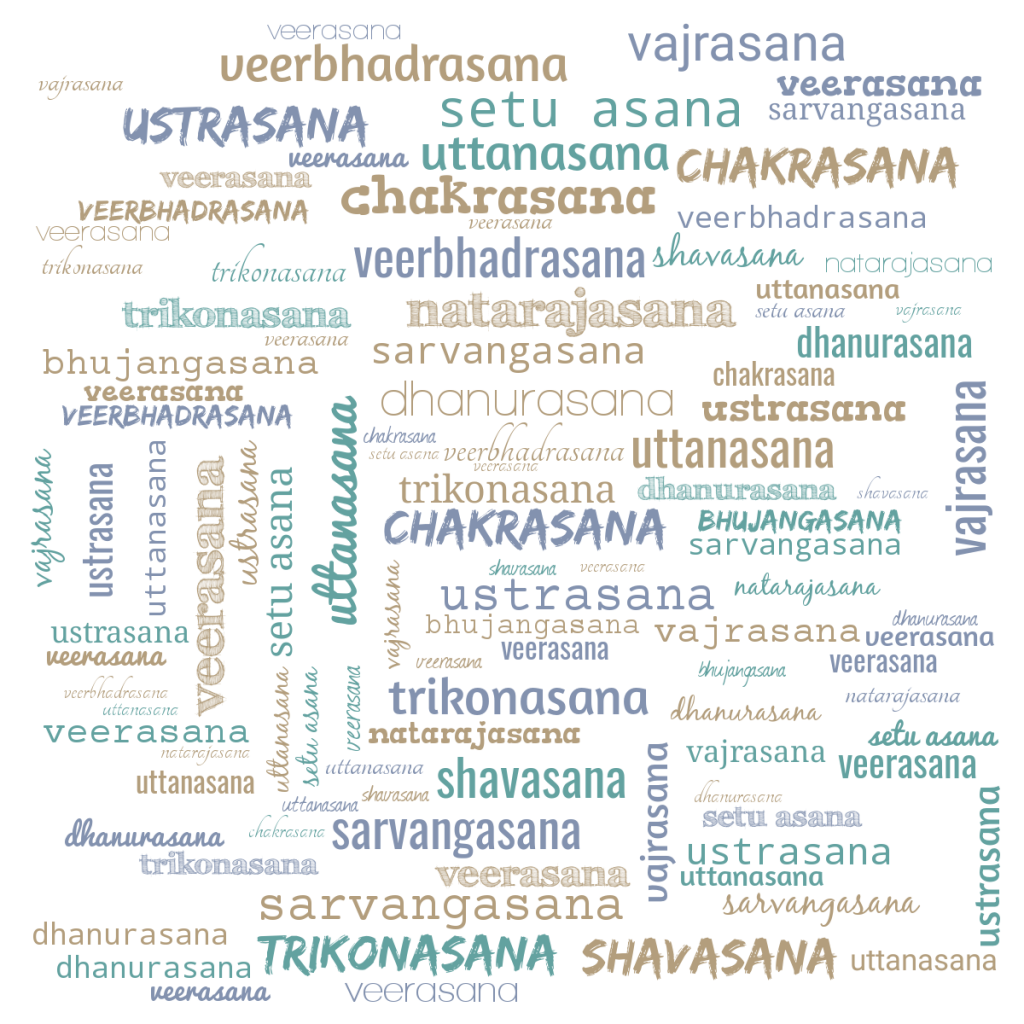
What's in a name?
Asana names made easy
Back to Asanas Page
Back to previous page
It takes a while to get used to asana names, to remember which asana goes by what name. The fact that many asanas have multiple names doesn't help much either.
What can help is knowing the meaning of common sanskrit terms used in asana nomenclature. Learn this short vocabulary list, decode the asana from the name and reach for the instruction embedded into the asana name!
Listed below are names of the parts of the body,often mentioned in the asana name
- Pada - feet
- Hasta - hands
- Sir - head
- Anguli - toes, usually the big toe
- Kati - waist
- Meru - spine
- Janu - knee
- Manibandh - wrist
- Goolf - ankle
- Anga - limbs
The words below are clues to either the movements or the positioning of body parts in the asana.
- Oordhva / Urdhva - upward
- Adho - downward
- Ardha - half (not to be confused with Oordhva
- Poorna - full, complete
- Poorva - initial, preliminary
- Naman - bend, usually in half
- Chakra - rotation, circle, circular
- Kona - angled, corner
- Uttan - stretch
- Supt - lying on your back, supine
- Baddha - bound
- Gupta - hidden, out of sight
- Salamba - supported
- Neeralamba - unsupported
- Utthita - standing
- Upavishta - seated, sitting
Putting them together, we get Padahastasana bringing your hands and feet together. Supt Baddhakonasana is supine bound angled pose, where your knees are bent to make corners, and then you lie on your back.
Other sanskrit words used in asana names are names of birds and animals (crane, crocodile, crab, fish etc.), adjectives or nouns, and names of people - sages, warriors, heroes and gods.
A mnemonic of P's - Parshva and Parivrtta tell you about Pelvis Positioning
- Parshva - side stretch, working the flanks. The pelvis faces front, in the same plane as the feet, with flanks as parallel to the floor as one can get.
- Parivrtta - twist from the trunk, pelvis facing to the side, as close to 90 degrees / perpendicular to the feet as one can get.
An exception is Parivrtta Janu Sirshasana, where the trunk twists but the pelvis remains facing the front.
- Trikonasana - trikon means triangle, so both legs remain straight, with unbent knees,
making two sides of a triangle, with the floor being the third side. - Konasana - kona means corner, tells you that one of the legs have to bend, with the knee bent into as close a right angle as one can get.
The angles or corners KONA can refer to varies with the pose. In Utthita Konasana, its the right angle made between the thigh and calf, by bending the knee. In Upavishta Konasana, its the angle between the legs spread wide and the trunk/hip. Konasana is also sometimes used to refer to the traditional Chakrasana, where the angle is formed beween upper and lower body, bending at the waist.
Back to Asanas Page Back to previous page